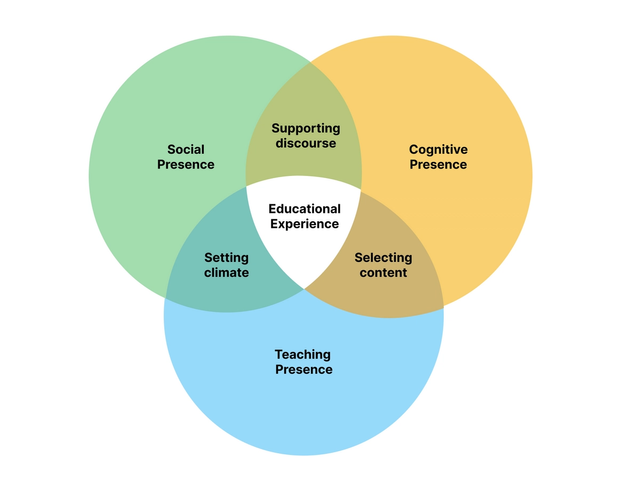Supporting a Community of Inquiry
“Reflective Teaching in a Digital Age” (Garrison, 2020) Download transcript.
The Community of Inquiry (CoI) theoretical framework (Garrison, 2007) is an educational model for online learning that represents the learning experience through the development of three interdependent elements: social, cognitive, and teaching presences. In this framework, teaching and learning relationships are conceptualized as “presences.” In the Learn More podcast you see here, Garrison describes the history of the CoI framework, including its role in the thoughtful design of online education, and practical ways of helping students learn through active participation and shared meaning making.
Social presence is the sense of community and safety developed in the learning environment that allows students to engage with their learning and with others (Garrison, 2009). Teaching presence points to the activities guided by the teacher, including design, facilitation, and directing the social and cognitive processes of the students, all of which lead to meaningful learning outcomes. Finally, cognitive presence refers to the process by which learners construct and sustain new learning through engagement and reflection (Anderson et al., 2000).
The three presences dynamically interact to create the educational experience of our students. As you proceed in the course, you will see that we have adapted the model slightly in order to connect the CoI elements to the principles of UDL. You will also be introduced to the closely connected framework of critical digital pedagogy later in the course.

Reflective Practice
Reflective practice is fundamental to the learning process. It is also fundamental for all of us in education as we design meaningful teaching and learning environments for students. CoI is a framework founded on the active reflection and practice of social, cognitive, and teaching presences. UDL is also a reflective practice, as are the anti-oppression and decolonizing frameworks and critical pedagogy you will be exploring in this course.
A systematic reflective process: Getting Started with Reflective Practice.
The Cambridge International Teaching and Learning Team has integrated Kolb's model with a “systematic reflective process for review for supporting teachers to make links from one experience to the next, making sure students make maximum progress.”
Myth: Reflection is an unproductive activity.